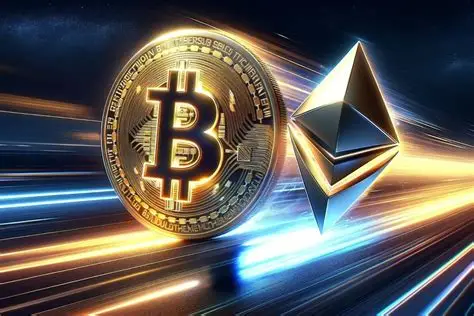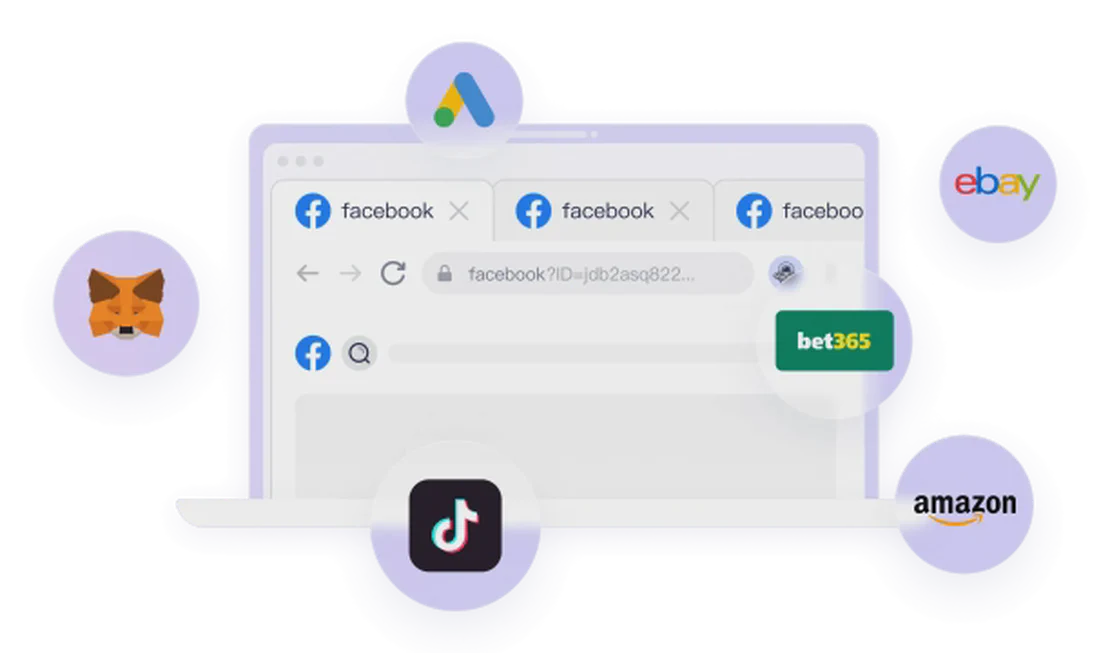Every great market cycle is driven by a new narrative. If the last bull run was the overture of “institutional adoption,” then the one in 2025 is seemingly writing a vastly different, grander chapter. A new, enterprise-level narrative, deeply tied to “Ethereum,” is quietly taking shape. Its momentum is so strong it could surpass all our previous imaginations. As many seasoned observers have stated, this could be the wildest, most spectacular altcoin season we have ever witnessed.

The Foundation of the New Narrative: An Oncoming “Ethereum Gold Rush”
Just a couple of months ago, the market’s focus was still on who would be the next to “buy Bitcoin.” However, the shift in sentiment has arrived so quickly and so decisively.
A series of stunning announcements have unveiled the curtain on this gold rush: Bitcoin mining company Bitmine declared it would cease its Bitcoin operations and go “All in on Ethereum,” spending a staggering $4.96 billion to purchase over 1.15 million ETH in just six weeks. Shortly after, a company co-founded by Ethereum’s creator, Vitalik Buterin, also announced it was establishing a massive “ether reserve fund,” echoing the moves of giants like BlackRock.
This is no longer a carnival for sporadic retail investors. This is a resource mobilization driven, orchestrated, and premeditated by Wall Street’s top institutions, corporate giants, and key industry consortia (like the Enterprise Ethereum Alliance, with its hundreds of member companies). The analyst in the video makes a sharp point: Ether’s price is roughly 30 to 40 times that of Bitcoin, meaning it’s significantly easier and cheaper for a company to acquire an equivalent market-value reserve of Ether. This massive “bang for the buck” advantage is driving capital into the Ethereum ecosystem at an unprecedented speed and scale.
The Detonator and Accelerator: The Paradigm Shift from Ethereum ETFs
The practical catalyst for this gold rush is undoubtedly the success of the spot Ethereum ETF. But its significance goes far beyond simply providing a compliant investment vehicle.
- Staking and Perpetual Yields: Unlike Bitcoin, Ethereum has a native staking mechanism. When BlackRock’s Ethereum ETF stakes its ETH, investors holding ETF shares can receive a continuous stream of staking rewards, much like if they owned the tokens directly. This creates a powerful “positive feedback loop”: institutions buy ETH via the ETF for staking → stable staking demand reduces the circulating supply → drives up ETH’s price → attracts more capital into the ETF.
- Supply-Side Deflationary Pressure: The analyst also mentions a critical point: Ethereum’s supply is not fixed. Following the EIP-1559 upgrade, a certain amount of ETH is burned with every transaction on the network. As more high-throughput applications emerge (e.g., recent announcements from several US banks about building their own stablecoins on Ethereum for hundreds of billions of dollars in transaction volume), the amount of ETH burned will become immense, creating a strong deflationary effect. When demand (buying) consistently increases while supply (burning + institutional accumulation) decreases, the price appreciation curve can become incredibly steep.
The Historic Moment: When “Ethereum Dominance” Replaces “Bitcoin Maximalism”
We are at a historic turning point. Previously, Bitcoin was the bellwether, and the fate of altcoins was entirely dependent on its performance. Now, the narrative is being rewritten:
When Ethereum soars, the entire crypto market will experience unprecedented prosperity.
This is not only because ETH is the largest “altcoin” itself but, more importantly, because it is the bedrock of the entire DeFi, NFT, GameFi, and Layer2 ecosystem. A rise in ETH’s price directly signifies an increase in the utility and health of the Ethereum network, thereby bringing liquidity, users, and attention to the thousands of projects built upon it. As the video predicts, if the current accumulation trend continues, an ETH price of $8,000 to $15,000 in the short term (9-12 months) is not out of the question.
At that time, Bitcoin will likely still appreciate steadily, but the main upward thrust and the greatest wealth effect of this cycle will almost certainly be concentrated on Ethereum and its high-quality projects. This will be the true establishment of “Ethereum dominance” and could very well be the craziest altcoin season we’ve ever seen.

Securing Your Grand Opportunity: The Ultimate Strategy for Multi-Account Management
Facing a market deeply dominated by institutions and whales, as an individual investor or a more sophisticated trader, we feel both the excitement and a hint of caution. When the market is controlled by a few major players, the efficiency of information and action becomes paramount.
Imagine this scenario: when a major piece of positive news hits the market (e.g., BlackRock announces another ETH purchase, or Bitmine reveals more buying plans), you might want to:
- Build positions simultaneously on multiple exchanges (Binance, Bybit, OKX, etc.) to diversify risk.
- Allocate capital to different strategies—part for long-term ETH holding and part for trading ETH derivatives or related altcoins.
- As a community node or project member, manage multiple wallets to interact with projects, participate in airdrops, and engage in staking.
However, the traditional single-account operation model seems thin and risky in the face of this 2025 narrative. If you operate all your accounts from the same device and network, your behavior patterns will be easily identified and correlated by exchanges and projects. This not only causes you to miss the opportunity to capture opportunities in parallel through different IPs and accounts but could even lead to your accounts being restricted or banned during complex arbitrage or hedging operations due to triggering platform risk controls.
This is where the FlashID Anti-Detect Browser provides its core value—allowing you to become multiple independent “whales” in the age of Ethereum dominance, participating in this feast securely and efficiently.
- Environmental Isolation for Confident Deployment: With FlashID, you can create a separate, isolated digital environment for every exchange account, every wallet address, and every project interaction window. Each environment has its own independent IP address, browser fingerprint, device ID, and cookies. This means your operation on Bybit and your activity on Binance appear to the system as if they come from two separate users in different parts of the world. This allows you to safely manage multiple positions in parallel, conduct cross-exchange arbitrage, or simultaneously participate in activities across multiple DApps without worrying about being “correlated and banned.”
- Efficiency Multiplier to Seize the First-Mover Advantage: FlashID’s RPA automation scripts and window synchronization features are “divine tools” for capturing market fluctuations and executing complex strategies. You can write a script to automatically complete the entire arbitrage process of placing and closing orders across different, FlashID-isolated accounts when a price discrepancy for ETH appears on a certain exchange. Or, through window synchronization, you can with one click execute deposit or borrowing operations on all accounts connected to lending protocols like Aave or Compound, greatly improving fund utilization efficiency and execution power.
- Full-Scene Coverage for a Seamless Experience: Whether it’s trading on the web interface or using MetaMask and other wallets to interact with Ethereum’s DeFi, FlashID can provide perfect isolation protection. Meanwhile, its Cloud Phone functionality extends this protection to the mobile side. You can run Bybit App or Trust Wallet independently within the cloud phone, achieving secure multi-account management on mobile, allowing you to control your positions anytime, anywhere.
In this new era where data and efficiency determine victory, FlashID is not just a tool; it is your essential defense and engine for responding to the “Ethereum dominance” narrative. It allows you to enjoy the market’s prosperity while holding onto your gains more securely and for a longer period.

Frequently Asked Questions (FAQ)
Q: Is companies accumulating ETH truly the decisive factor for this bull run?
A: Yes, the scale and determination of this institutional and corporate accumulation of ETH far surpass anything we’ve seen before. It is no longer a simple financial investment but a strategic bet on Ethereum as the infrastructure for Web3. Combined with ETH staking yields, the network’s deflationary mechanism, and the boom in the DeFi ecosystem, this accumulation has created a powerful positive cycle of “buying + reducing supply,” making it the core narrative for why ETH could break its previous highs and lead this bull run.
Q: Why would companies (like Bitmine) abandon Bitcoin for Ethereum? Is it just because it’s cheaper?
A: The lower price is a very important initiating factor, but it’s not the whole story. The deeper reasons include:
- Application Prospects: Ethereum is the center for smart contracts and DeFi, with a much richer ecosystem and greater future potential than Bitcoin.
- Yield Potential: Through Ethereum 2.0 staking, institutions can generate much higher passive income than by simply holding Bitcoin.
- Network Effects: With the growth of the Enterprise Ethereum Alliance and the increasing adoption by traditional financial institutions like banks, Ethereum’s “enterprise-level” endorsement is getting stronger and stronger.
Q: What is the essential difference between an Ethereum ETF and a Bitcoin ETF, and why is its impact on ETH greater?
A: The most essential difference is “staking.” Bitcoin itself does not generate interest, but Ethereum does. This means the Ethereum ETF is not just about buying and holding; it can also stake the ETH it holds and distribute the yields to its fund holders. This not only creates a new, massive source of demand for ETH but also further solidifies its value foundation (perpetual yield), providing much stronger support for its price than the Bitcoin ETF.
Q: What is “Enterprise Ethereum Alliance” (EEA)? and why is it important?
A: The EEA is a non-profit consortium of over 500 of the world’s top companies, banks, and research institutions. Its goal is to collaborate and promote the use of Ethereum in enterprise-level applications. The very existence of the EEA proves the maturity and mainstream acceptance of Ethereum technology. These members (including Goldman Sachs, JPMorgan, etc.) have been buying and using ETH for a long time, and their continued commitment is a cornerstone of the “institutional narrative” in this bull run.
Q: If ETH really reaches $15,000, what impact will it have on the altcoin market?
A: Typically, a strong rally in ETH brings a massive “rising tide lifts all boats” effect to the entire altcoin market. This is because:
- Market Sentiment: ETH is the market’s “bellwether.” Its rally greatly boosts the confidence of retail and risk-taking investors, making them more willing to chase high-return altcoins.
- Capital Spillover: The massive gains from ETH attract a huge amount of capital into the crypto market. After satisfying their ETH allocations, this capital will naturally seek the next growth points—namely, various high-potential altcoins.
- Ecosystem Synergy: A rise in ETH means prosperity for the Ethereum ecosystem (Layer 1 and Layer 2), and projects within the ecosystem (like their tokens) will directly benefit from more users and transactions, thereby driving up their token prices.
Q: As a retail investor, how should I position myself now?
A: In terms of positioning, it’s advisable to adopt a core-satellite strategy.
- Core Position: Allocate the majority of your capital to Ethereum as the primary source of returns for this cycle.
- Satellite Position: Use a smaller portion of your capital to research high-potential projects within the Ethereum ecosystem, such as well-known Layer 2 solutions (like Arbitrum, Optimism), mainnet projects with major technological or narrative upgrades, or breakthrough innovations in DeFi and GameFi.
- Risk Management: Never go all in, and stay vigilant about market dynamics and institutional holding changes.
Q: Why has managing multiple trading accounts become so crucial under the current circumstances?
A: First, it’s for risk diversification, avoiding concentrating all your funds on a single platform. Second, it’s to capture cross-exchange arbitrage opportunities, profiting from price differences. Most importantly, when the market is highly volatile, multi-account management allows you to execute complex trading strategies more flexibly without missing opportunities due to restrictions or outages on a single platform.
Q: How does FlashID help me achieve secure multi-account management? How does it prevent my accounts from being linked?
A: FlashID achieves this by creating a completely separate, isolated digital environment for each account. This independent environment includes:
- Independent IP Address: Each account connects through a different IP, simulating a real user in a different geographical location.
- Independent Browser Fingerprint: Including device model, OS, browser version, Canvas/WebGL fingerprint, etc., are randomized to ensure each account’s “identity” is unique.
- Independent Cookies and Cache: Accounts do not affect each other. Through this method, even if you operate on the same computer, various trading platforms cannot identify that these accounts belong to the same person, thus fundamentally eliminating the risk of account correlation and banning due to identical environments.
Q: Besides crypto trading, what else can FlashID be used for?
A: FlashID is a universal solution for multi-account management and risk isolation, with a wide range of applications. Beyond crypto (airdrops, multi-wallet interaction, arbitrage), it is also widely used for:
- Affiliate Marketing: Promoting on multiple platforms with different accounts to avoid being flagged as spam.
- Cross-border E-commerce: Managing multiple independent store accounts to prevent association.
- Social Media Marketing: Running multiple Facebook, TikTok, Instagram accounts simultaneously.
- Web Scraping: Assigning a unique IP and browser environment to each scraping task to prevent being blocked by websites.
- Traffic Monetization: Efficiently managing multiple task accounts.
Q: Does using FlashID for multi-account operations violate exchange user agreements?
A: This is a boundary that must be strictly respected. FlashID provides “environment isolation” technology intended to protect users’ digital identities and funds, preventing wrongful bans due to identical technical environments (IP fingerprints). However, using FlashID for malicious activities like wash trading, bonus farming, or creating numerous “zombie accounts” for market manipulation is a clear violation and can still lead to account penalties. The neutrality of technology determines how it is used, so please be sure to abide by platform rules and laws.
You May Also Like
